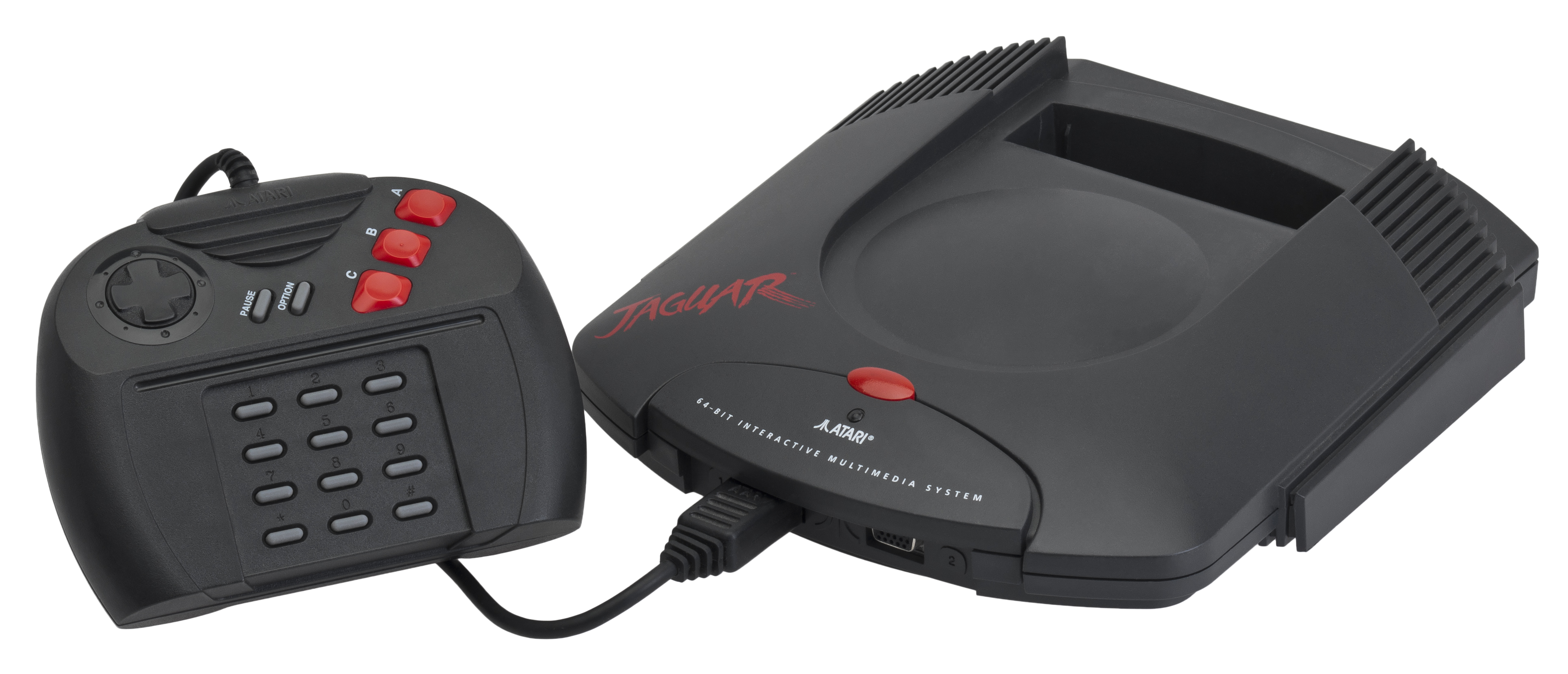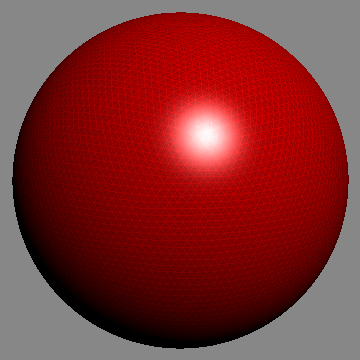|
Checkered Flag (1994 Video Game)
''Checkered Flag'' is a formula one, Formula One Racing video game, racing video game developed by Rebellion Developments and published by Atari Corporation for the Atari Jaguar on November 28, 1994, and later released in Japan by Messe Sansao in July 1995. It is a Video game remake, remake of Atari's 1991 Atari Lynx Checkered Flag (1991 video game), title of the same name. Taking a more Sim racing, simulation-based approach compared to the original game, players compete against other racers across multiple tracks in order to finish on first place and advance to the next course. Originally advertised as a direct sequel to the Atari Lynx original, ''Checkered Flag'' went through multiple changes before settling down under its final name and it is inspired by Sega's 1992 arcade game ''Virtua Racing''. ''Checkered Flag'' received very mixed reception since its release. By April 1, 1995, the game has sold more than 20,000 copies though it is unknown how many were sold in total duri ... [...More Info...] [...Related Items...] OR: [Wikipedia] [Google] [Baidu] |
Rebellion Developments
Rebellion Developments Limited is a British video game developer based in Oxford, England. Founded by Jason and Chris Kingsley in December 1992, the company is best known for its ''Sniper Elite'' series and multiple games in the ''Alien vs. Predator'' series. Sister company Rebellion Publishing has published comic books since 2000, when it purchased '' 2000 AD'', the publisher of characters such as Judge Dredd and Rogue Trooper. History Origins (1992–1999) Rebellion was founded on 4 December 1992 by brothers Jason and Chris Kingsley in Oxford, England. The pair had just finished academic degrees at the University of Oxford, and had ambitions of starting doctorates. In their spare time, they did freelance work in the games industry. When their freelance jobs roles began to expand and they were taking on more management responsibilities, they decided to establish Rebellion in Oxford. The foundation of the studio was laid when the brothers secured a deal with video game publish ... [...More Info...] [...Related Items...] OR: [Wikipedia] [Google] [Baidu] |
Sega
is a Japanese multinational corporation, multinational video game and entertainment company headquartered in Shinagawa, Tokyo. Its international branches, Sega of America and Sega Europe, are headquartered in Irvine, California and London, respectively. Its division for the development of both arcade games and home video games, Sega Games, has existed in its current state since 2020; from 2015 to that point, the two had made up separate entities known as Sega Games and Sega Interactive Co., Ltd. Sega is a subsidiary of Sega Sammy Holdings. From 1983 until 2001, Sega also developed List of Sega video game consoles, video game consoles. Sega was founded by American businessmen Martin Bromley and Richard Stewart as on June 3, 1960; shortly after, the company acquired the assets of its predecessor, History of Sega, Service Games of Japan. Five years later, the company became known as Sega Enterprises, Ltd., after acquiring Rosen Enterprises, an importer of Arcade game, coin-oper ... [...More Info...] [...Related Items...] OR: [Wikipedia] [Google] [Baidu] |
EEPROM
EEPROM (also called E2PROM) stands for electrically erasable programmable read-only memory and is a type of non-volatile memory used in computers, usually integrated in microcontrollers such as smart cards and remote keyless systems, or as a separate chip device to store relatively small amounts of data by allowing individual bytes to be erased and reprogrammed. EEPROMs are organized as arrays of floating-gate transistors. EEPROMs can be programmed and erased in-circuit, by applying special programming signals. Originally, EEPROMs were limited to single-byte operations, which made them slower, but modern EEPROMs allow multi-byte page operations. An EEPROM has a limited life for erasing and reprogramming, now reaching a million operations in modern EEPROMs. In an EEPROM that is frequently reprogrammed, the life of the EEPROM is an important design consideration. Flash memory is a type of EEPROM designed for high speed and high density, at the expense of large erase blocks (ty ... [...More Info...] [...Related Items...] OR: [Wikipedia] [Google] [Baidu] |
Manual Transmission
A manual transmission (MT), also known as manual gearbox, standard transmission (in Canada, the United Kingdom, and the United States), or stick shift (in the United States), is a multi-speed motor vehicle transmission (mechanics), transmission system, where gear changes require the driver to manually select the gears by operating a gear stick and clutch (which is usually a foot pedal for cars or a hand lever for motorcycles). Early automobiles used ''sliding-mesh'' manual transmissions with up to three forward gear ratios. Since the 1950s, ''constant-mesh'' manual transmissions have become increasingly commonplace and the number of forward ratios has increased to 5-speed and 6-speed manual transmissions for current vehicles. The alternative to a manual transmission is an automatic transmission; common types of automatic transmissions are the Automatic transmission#Hydraulic automatic transmissions, hydraulic automatic transmission (AT), and the continuously variable transmissio ... [...More Info...] [...Related Items...] OR: [Wikipedia] [Google] [Baidu] |
Automatic Transmission
An automatic transmission (sometimes abbreviated to auto or AT) is a multi-speed transmission used in internal combustion engine-based motor vehicles that does not require any input from the driver to change forward gears under normal driving conditions. It typically includes a transmission, axle, and differential in one integrated assembly, thus technically becoming a transaxle. The most common type of automatic transmission is the hydraulic automatic, which uses a planetary gearset, hydraulic controls, and a torque converter. Other types of automatic transmissions include continuously variable transmissions (CVT), automated manual transmissions (AMT), and dual-clutch transmissions (DCT). An electronic automatic transmission (EAT) may also be called an electronically controlled transmission (ECT), or electronic automatic transaxle (EATX). A hydraulic automatic transmission may also colloquially called a " slushbox" or simply a "torque converter", although the latter term c ... [...More Info...] [...Related Items...] OR: [Wikipedia] [Google] [Baidu] |
Tire
A tire (American English) or tyre (British English) is a ring-shaped component that surrounds a Rim (wheel), wheel's rim to transfer a vehicle's load from the axle through the wheel to the ground and to provide Traction (engineering), traction on the surface over which the wheel travels. Most tires, such as those for automobiles and bicycles, are pneumatically inflated structures, which also provide a flexible cushion that absorbs shock as the tire rolls over rough features on the surface. Tires provide a footprint, called a contact patch, that is designed to match the weight of the vehicle with the bearing strength of the surface that it rolls over by providing a bearing pressure that will not deform the surface excessively. The materials of modern pneumatic tires are synthetic rubber, natural rubber, fabric, and wire, along with carbon black and other chemical compounds. They consist of a tire tread, tread and a body. The tread provides Traction (engineering), traction ... [...More Info...] [...Related Items...] OR: [Wikipedia] [Google] [Baidu] |
Weather Conditions
Weather is the state of the atmosphere, describing for example the degree to which it is hot or cold, wet or dry, calm or stormy, clear or cloudy. On Earth, most weather phenomena occur in the lowest layer of the planet's atmosphere, the troposphere, just below the stratosphere. Weather refers to day-to-day temperature, precipitation, and other atmospheric conditions, whereas climate is the term for the averaging of atmospheric conditions over longer periods of time. When used without qualification, "weather" is generally understood to mean the weather of Earth. Weather is driven by air pressure, temperature, and moisture differences between one place and another. These differences can occur due to the Sun's angle at any particular spot, which varies with latitude. The strong temperature contrast between polar and tropical air gives rise to the largest scale atmospheric circulations: the Hadley cell, the Ferrel cell, the polar cell, and the jet stream. Weather systems in ... [...More Info...] [...Related Items...] OR: [Wikipedia] [Google] [Baidu] |
Sprite (computer Graphics)
Sprite commonly refers to: * Sprite (drink), a lemon-lime beverage produced by the Coca-Cola Company * Sprite (computer graphics), a smaller bitmap composited onto another by hardware or software * Sprite (folklore), a type of legendary creature including elves, fairies, and pixies Sprite may also refer to: Comics *Sprite (Eternal), a fictional member of the race of Eternals in the Marvel Universe * ''Sprite'' (manga), a 2009 Japanese manga series *Sprite, alias of the Marvel Comics character Kitty Pryde *Sprite comic, a webcomic that consists primarily of computer sprites from video games Computing and technology * Sprite (operating system), an operating system developed at the University of California, Berkeley * SPRITE (spacecraft), a proposed Saturn atmospheric probe mission * SPRITE infrared detector, a specialist detector device using a process known as signal processing in the element * De Havilland Sprite, a British rocket engine Vehicles * Sprite (motorcycle), a ... [...More Info...] [...Related Items...] OR: [Wikipedia] [Google] [Baidu] |
2D Computer Graphics
2D computer graphics is the computer-based generation of digital images—mostly from two-dimensional models (such as 2D geometric models, text, and digital images) and by techniques specific to them. It may refer to the branch of computer science that comprises such techniques or to the models themselves. 2D computer graphics are mainly used in applications that were originally developed upon traditional printing and drawing technologies, such as typography, cartography, technical drawing, advertising, etc. In those applications, the two-dimensional image is not just a representation of a real-world object, but an independent artifact with added semantic value; two-dimensional models are therefore preferred, because they give more direct control of the image than 3D computer graphics (whose approach is more akin to photography than to typography). In many domains, such as desktop publishing, engineering, and business, a description of a document based on 2D computer grap ... [...More Info...] [...Related Items...] OR: [Wikipedia] [Google] [Baidu] |
3D Computer Graphics
3D computer graphics, or “3D graphics,” sometimes called CGI, 3D-CGI or three-dimensional computer graphics are graphics that use a three-dimensional representation of geometric data (often Cartesian) that is stored in the computer for the purposes of performing calculations and rendering digital images, usually 2D images but sometimes 3D images. The resulting images may be stored for viewing later (possibly as an animation) or displayed in real time. 3D computer graphics, contrary to what the name suggests, are most often displayed on two-dimensional displays. Unlike 3D film and similar techniques, the result is two-dimensional, without visual depth. More often, 3D graphics are being displayed on 3D displays, like in virtual reality systems. 3D graphics stand in contrast to 2D computer graphics which typically use completely different methods and formats for creation and rendering. 3D computer graphics rely on many of the same algorithms as 2D computer vector gr ... [...More Info...] [...Related Items...] OR: [Wikipedia] [Google] [Baidu] |
Shading
Shading refers to the depiction of depth perception in 3D models (within the field of 3D computer graphics) or illustrations (in visual art) by varying the level of darkness. Shading tries to approximate local behavior of light on the object's surface and is not to be confused with techniques of adding shadows, such as shadow mapping or shadow volumes, which fall under global behavior of light. In drawing Shading is used traditionally in drawing for depicting a range of darkness by applying media more densely or with a darker shade for darker areas, and less densely or with a lighter shade for lighter areas. Light patterns, such as objects having light and shaded areas, help when creating the illusion of depth on paper. There are various techniques of shading, including cross hatching, where perpendicular lines of varying closeness are drawn in a grid pattern to shade an area. The closer the lines are together, the darker the area appears. Likewise, the farther apart the lin ... [...More Info...] [...Related Items...] OR: [Wikipedia] [Google] [Baidu] |







